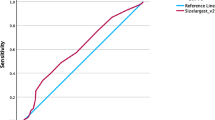Summary
Almost 75 % of all urinary calculi can be treated by extracorporeal shock wave lithotripsy (ESWL). In contrast to endoscopic and open-surgical procedures the patients are not immediately free of stones. The residual fragments after ESWL are called clinically insignificant residual fragments (CIRF), if the fragments are less than 5 mm in size and if there is the possibility of a spontaneous passage. But CIRF can cause ureteral obstruction. In addition, CIRF play an important role for the risk of stone growth and stone recurrence.
The metaanalysis shows that it is not advisable to classify the CIRF only by their size. The morphological conditions of the urinary tract also have to be evaluated. Therefore, stone patients with CIRF after ESWL require a close follow-up and timely adjuvant therapy. All aspects mentioned lead to the conclusion to use the term “CIRF” with caution.
Zusammenfassung
Mit der extrakorporalen Stoßwellenlithotripsie (ESWL) können ca. 75 % aller Harnsteine behandelt werden. Eine sofortige Steinfreiheit ist im Gegensatz zur endoskopischen und offen operativen Harnsteinbehandlung jedoch nicht gewährleistet. Die Restkonkremente werden als CIRF bezeichnet, wenn sie aufgrund ihrer Größe als spontan abgangsfähig anzusehen sind. Im weiteren Verlauf der Harnsteinbehandlung können die CIRF klinische Relevanz dadurch erlangen, daß sie Ursache einer Harnwegsobstruktion sind. Außerdem spielen die CIRF für die Rezidivsteinbildung und das Wachstum von Residualkonkrementen eine Rolle. Die Metaanalyse der Literatur zeigt, daß es nicht gerechtfertigt ist, die Klassifikation von Residualfragmenten als CIRF nur aufgrund ihrer Größe vorzunehmen. Vielmehr muß auch die Morphologie des Harntrakts berücksichtigt werden. Harnsteinpatienten mit CIRF nach ESWL verlangen daher eine engmaschige Verlaufskontrolle und ggf. Therapie. Alle genannten Aspekte unterstreichen die klinische Bedeutung der CIRF und legen nahe, diesen Begriff in Frage zu stellen.
Similar content being viewed by others
Author information
Authors and Affiliations
Rights and permissions
About this article
Cite this article
Lahme, S., Wilbert, D. & Bichler, KH. On the significance of “clinically insignificant residual fragments” after extracorporeal shock wave lithotripsy. Urologe [A] 36, 226–230 (1997). https://doi.org/10.1007/s001200050094
Issue Date:
DOI: https://doi.org/10.1007/s001200050094



